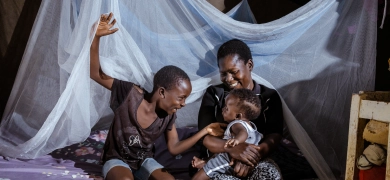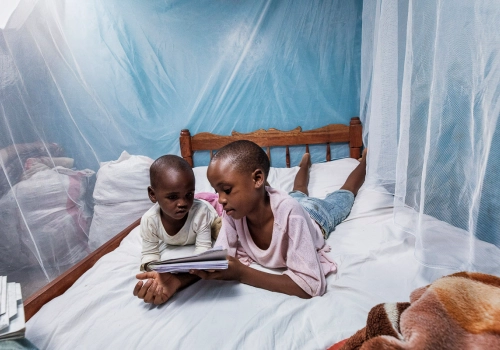Malaria
Mosquito nets and the fight against malaria

Modern progress to defeat an ancient disease
Dating back several millennia, malaria is considered one of the oldest diseases and continues to plague mankind. While it has largely been eliminated in many countries across Europe and North America, more than 80 countries in Africa are still battling its devastating effects.
Malaria is spread through the bite of an infected female Anopheles mosquito, posing a persistent threat to millions. Introducing a physical barrier that can prevent biting has been fundamental to malaria control strategies for centuries. Cleopatra herself is said to have slept under a net for protection. Fast forward to World War II, when bed nets were widely deployed to shield soldiers in the South Pacific from mosquito-borne diseases. The 1980s marked a breakthrough in disease prevention with the introduction of insecticide-treated nets, which not only provided a physical barrier but also actively killed mosquitoes. However, the need to dip and retreat nets every 6 to 12 months proved impractical and costly for widespread use.

Seizing an opportunity to use our long-standing expertise in material science and textile manufacturing as a force for good, we began exploring better solutions: a bed net that could retain its insecticidal properties for multiple years, without the need for constant retreatment—yet safe enough for young children to use.
By the early 2000s, long-lasting insecticide-treated nets, along with other complementary vector control tools, had begun to revolutionize the fight against malaria. In just two decades, the death rate was cut in half.
However, the emergence of insecticide resistance—threatening vector control efficacy—has recently become a new challenge to be solved.
New global evidence reinforces the impact of insecticide-treated nets
Long-lasting insecticide-treated nets (ITNs, also known as LLINs) remain the most influential malaria intervention worldwide, according to new analysis from the Malaria Atlas Project (MAP). The 2025 report finds that insecticide-treated nets were responsible for 72% of all malaria cases averted between 2000 and 2024—a higher proportion than earlier global estimates.
However, stalling coverage rates have driven a slowdown of progress in recent years. MAP models indicate that reaching 80% coverage by 2024 would have reduced malaria transmission rates to less than 14%. High levels of coverage are also essential for enabling vaccines to achieve their full potential, as vaccine effectiveness improves as transmission decreases.
Vestergaard continues to support these global efforts through innovation, quality assurance, and long-term partnerships that strengthen access to high-performing malaria vector control innovations.